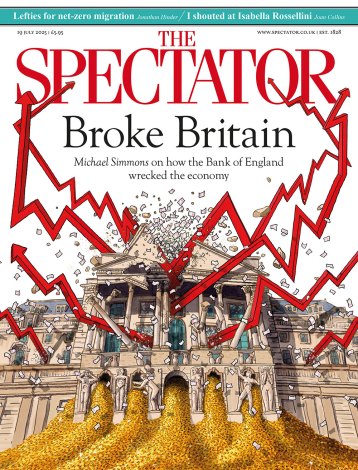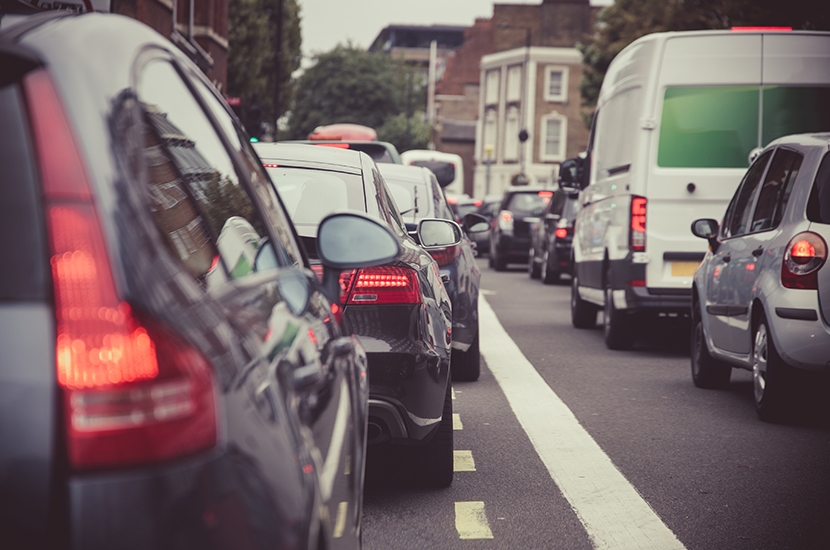For most London-based politicians, there’s a threat that’s worse than Covid. You’ll begin to notice it as we ease out of lockdown. It’s not the Brazilian variant that keeps them awake at night, or collapsing hospitals. Nope. What really worries them is the thought of cars. Watch them pale as they mutter the words ‘car-led recovery’ and marvel at the variety of tortuous schemes cooked up to thwart motorists. You’d have thought, given the teetering economy, that any recovery, car-led or otherwise, would be welcome — especially as pollution plummeted between 2017 and early 2020, and diesel’s the problem, not your average commuter ride. Volvo said on Tuesday that all its cars will be fully electric by 2030. The pollution problem seems to be solving itself. But car-fear has seized the collective political mind and, I think, melted it.
The congestion charge is now £15, all day every day. That’s alarming enough as it is. But the logic behind the price hike is even scarier. There are fewer buses, says Sadiq Khan, because of funding cuts and drivers off sick. There is also (because of social distancing) less space on every train or bus. People will have no choice but to drive, so… it’s vital we stop them. Roll that logic around in your mind a little; enjoy the feeling. A London driver is like Paul, the hero of Stephen King’s Misery, to Khan’s Kathy Bates: ‘I had to chop your foot off to stop you escaping don’t you see? It’s for your own good, you naughty boy.’
In late summer, with very little notice or consultation, a number of London councils simply closed residential streets across the city (the people-friendly streets neighbourhood scheme). I had no idea they could move so fast. There was a thin attempt to present this as a way of stopping ‘rat runs’, but for the most part local government was touchingly honest: people will want to drive, as we recover from Covid, so we have to make every journey torture. ‘We need to move quickly to prevent the car becoming the default method for people to get around our borough,’ said my local councillor. But why?

You can tell a bad argument from its bad premise, and the war on cars rests on very shaky foundations: the idea that lockdown has been a lovely nostalgic holiday, a break from the bustle of normal life. Islington council says: ‘The Covid-19 lockdown has had a big impact on the way we use our streets. They were quieter, felt safer and journeys were quicker. Residents told us they really benefited and were able to enjoy their neighbourhood more.’ On the government website, Transport Secretary Grant Shapps says: ‘Millions of people have discovered, or rediscovered, cycling and walking. In some places, the initial lockdown period saw a 70 per cent rise in the number of people on bikes — for exercise, or for safe, socially distanced travel.’
What a lovely time we’ve all had! And, what nonsense. Yes, I see middle-class kids playing in parks, and their middle-class parents out jogging with their Fitbits — but the estates are ghost towns. There’s the odd pensioner creeping around, but God knows where the children are. Only drug dealers wheel the streets freely on electric scooters. One thing I’ll say for the people-friendly streets neighbourhood scheme: it’s terrific if you want to get on with selling cocaine, out of sight of passing cars.
Driving isn’t fair to people who don’t have cars, we’re told; shutting roads will make the air cleaner for ordinary people everywhere. But as far as I can see, the reverse is true. In almost every way, the push to make London car-free does over poorer Londoners. What do bankers care about a £15 a day congestion charge? But for a small business struggling to survive after lockdown, for the disabled and for the car-dependent elderly, it’s a bitter blow.
In almost every way, the push to make London car-free does over poor Londoners
Over the summer, when the side streets closed, the expensive residential streets, became even quieter. All the traffic that used to filter off down side streets was pushed on to the main roads where it stayed in a congested fog. It’s these main streets where the shops and restaurants are. It’s these streets the schoolchildren will be walking down on their way to school next week. Where’s the benefit to ‘ordinary people’?
Get on your bike, says the government: everyone can cycle. I look up at the tower blocks opposite, at the people the council says it has in mind, and try to imagine them on bikes: pensioners laughing as they flit between the cement-mixer trucks on Old Street; young mothers in niqabs balancing five children on the back.
And where does anyone imagine they’re going to keep their bikes? Applying for space in a council bike hangar is like trying to rent a flat in New York: there are long waiting lists. Any halfway decent bike left on the street won’t last more than 24 hours.
I’m a lifelong cyclist. I cycled everywhere before lockdown and I’ll cycle to work again, but I wouldn’t wish London cycling on anyone. It’s a dangerous game, and again, it favours the rich. If you live in Notting Hill and work in Westminster, your cycling commute is a lovely glide across two royal parks. If you have to bike to work along Bethnal Green Road — not so much.
Every new cycle lane creates a new slew of death traps. Sometimes they end abruptly, dumping unsuspecting cyclists into a stream of traffic. Others run between the buses and the bus stops, as if designed to catch out all but the sprightliest of passengers. At the heart of the unworkable plan to turn London (pop. nine million) into a cyclists’ paradise like Amsterdam (pop. one million) is the PM, who seems prepared to push and fund any number of cycle lanes and schemes, and countenance any measure to do down cars. I imagine him sitting, half-crazed, trapped in the Downing Street flat, dreaming of his biking days, refusing to admit that London simply isn’t suited to cycling.







Comments